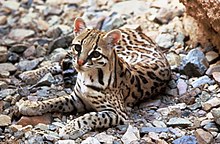When New Year’s Eve comes a lot of things happen around the
world. But if you are wondering what
happens in just America well I will show you.
I will start off by mentioning the rose bowl parade.
The Rose Bowl parade is the most special parade in all of America. It is tradition so it happens every year. I have heard it is a very cool parade. May be me, my mommy dad, and Aly can watch it
on TV some time. People even say parades
like this can chase away the spirits. This
parade is held in Pasadena California.
And almost everyone in California either watches it or goes to it. Also
people say there parade floats are really cool.
Also an interesting fact is that its nick name is “The Rose Parade”.
Another tradition some people celebrate is baby new
year. This tradition actually began in Greece
when they celebrated the annual rebirth of Dyonysus, their god of fertility. They would parade a baby around the streets
for the celebration. Egypt had a similar
custom. Although American Christians
thought these celebrations involving other gods was wrong, they gave in when
people began using babies as a symbol of the birth of Christ, celebrated just
one week before at Christmas.
Another tradition is the the ball drop at Time Square in New
York City is a tradition dating back more than 100 years. Time Square holds one of the biggest parties
in the country with millions in attendance or watching on television from all
over the world. The ball takes one
minute to drop, with the final ten seconds counted down by people everywhere.
The dropping of the ball marks the exact time of the passing of the old year
into the beginning of New Year's Day. While many believe this is a unique occurrence,
time balls are used around the world to keep accurate and exact time.
Another tradition is that our gossip magazines feature
psychics giving predictions around the New Year holiday. While some chuckle at the headlines in the
checkout line while waiting to pay for our groceries, others wait with
anticipation for the latest word on what will happen the following year. The future holds great interest too many
people. In Germany, New Year's Day
traditionally finds people dropping liquid lead into cold water to see what
shapes will form. By reading the shapes like tea leaves, predictions are made.
